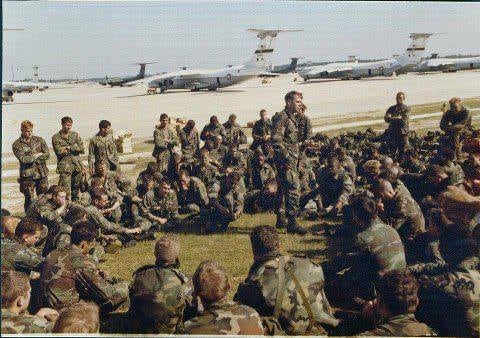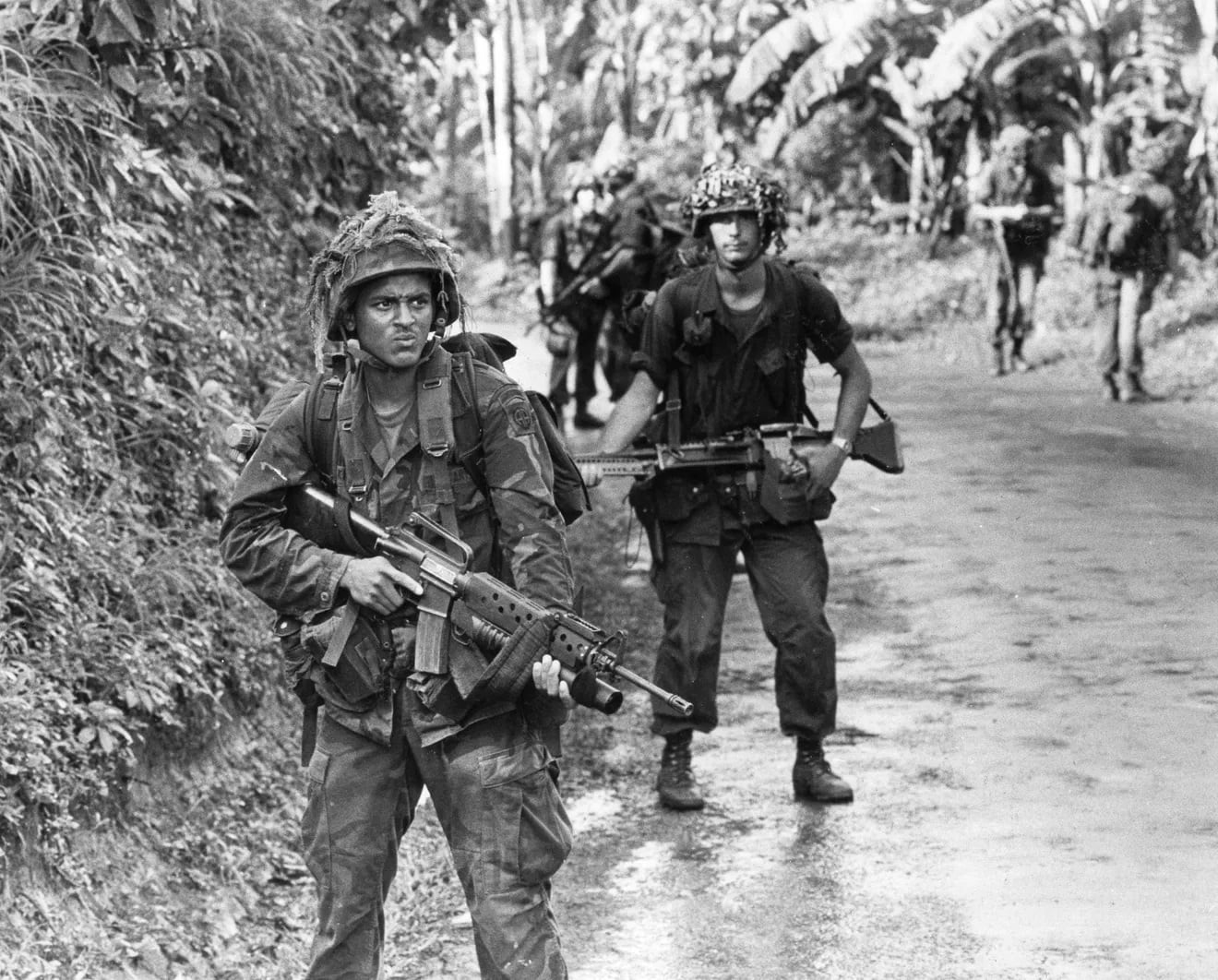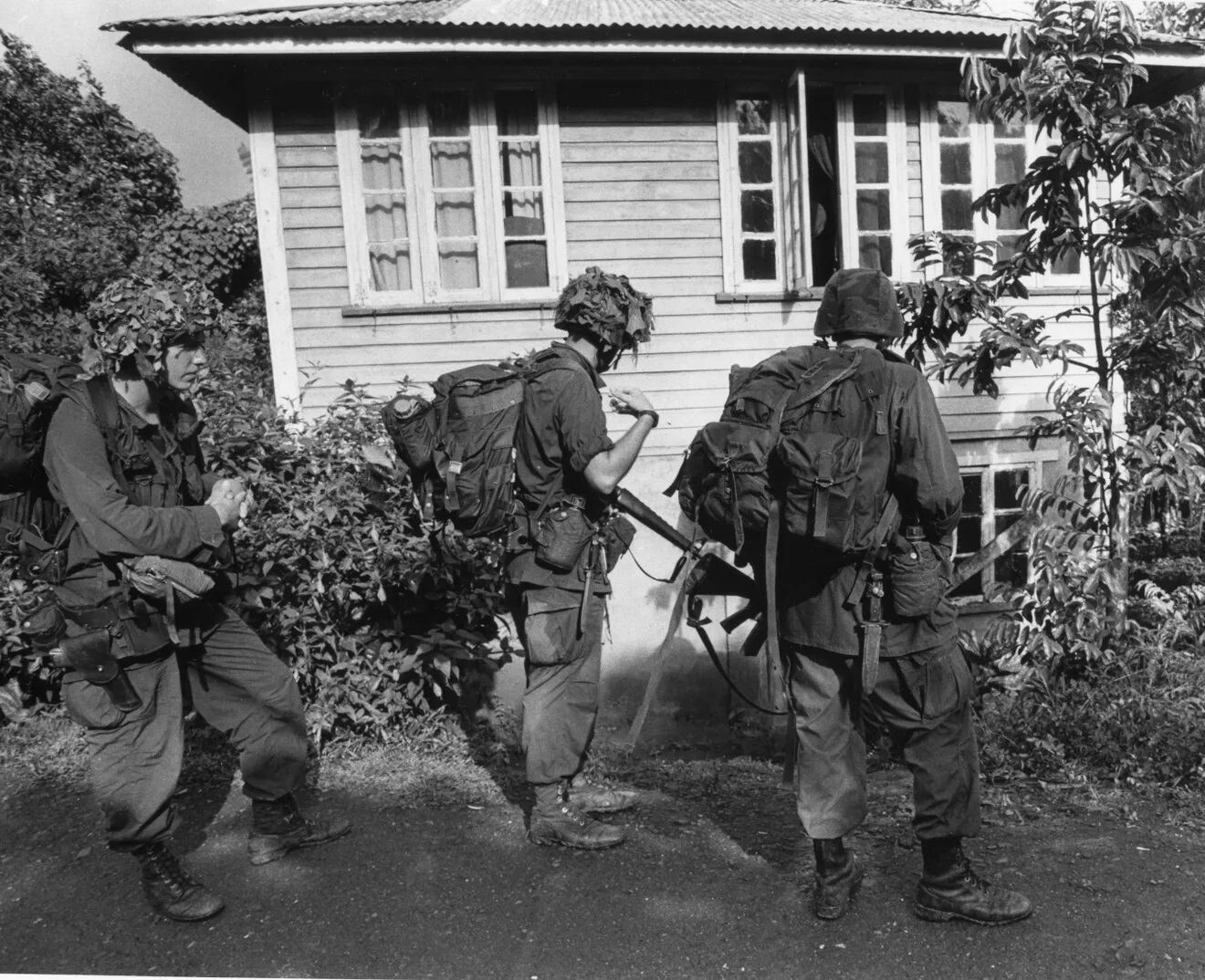Editor’s Note: This article was published as part of a content-sharing agreement between Army Times and The Fayetteville Observer.
When 20-year-old Ed Harm landed in the Caribbean nation of Grenada in October 1983, he first noticed the heat.
As the doors to the military aircraft he was aboard opened, Harm saw and heard tracer fire and explosions.
“We exited the aircraft and went to a drainage ditch and took cover, and the first thing I can remember is one of the first sergeants who was a Vietnam vet said, ‘Man, this looks just like Vietnam,’” Harm, a retired staff sergeant, said during a 40th-anniversary event of Operation Urgent Fury held in Fayetteville last week.
Harm and fellow paratroopers from then-Fort Bragg were sent to Grenada as reinforcements in response to the aftermath of a coup overthrowing Marxist Prime Minister Maurice Bishop.
President Ronald Reagan called upon U.S. forces to rescue 600 American students and 400 foreigners living in Grenada, to protect American interests.
About 8,000 soldiers, sailors, airmen and Marines worked with 353 Caribbean allies to restore the country’s government.
Though the fighting only lasted a few days, the mission was about 51 days, according to a report from the Joint Chiefs of Staff History Office.
Paratroopers roles in Urgent Fury
Harm, of Dayton, Ohio, was an artillery forward observer originally serving with Charlie Company, 1st Battalion, 319th Field Artillery Regiment, 82nd Airborne Division.
For Operation Urgent Fury, he was attached to the 2nd Battalion, 505th Parachute Infantry Regiment tasked to provide air and artillery support.
The unit, he said, was one that stayed the longest on the island, leaving Dec. 15, 1983.
The battalion was under the command of now-retired Col. Keith Nightingale.
Nightingale said Friday that the first couple of days were spent fighting the enemy followed by clearing the island.
The battalion’s Charlie Company helped capture Hudson Austin, the chairman of the People’s Revolutionary army and leader of the coup, Nightingale said.
“From then on the war was over essentially, and then we started going out basically looking for ex-members of the Revolutionary Guard, thugs, hoodlums and outlaws,” he said.

Retired Col. Mark Rocke was also attached to the battalion’s Charlie Company and remembers landing on the island between 1 and 2 p.m. after a counterattack led by the 75th Ranger Regiment.
Rocke was on the 82nd Airborne Division’s third aircraft onto the island on Oct. 25, 1983.
After the runway and airhead were secured at Point Salines, Rocke’s unit secured a compound 12 kilometers north at Frequente, he said.
“We secured an enormous amount of Soviet munitions, ammunition, vehicles, weapons, binoculars and six pigs,” Rocke said.
Rocke credited the enlisted soldiers he worked with for remaining professional while interacting with the citizens of Grenada, which he said helped with the mission.
By building trust, Rocke said, his soldiers were able to learn from locals where any remaining enemy activity was on the island, along with ammunition and weapons stockpiles.
Retired Sgt. 1st Class John Sulek, of Virginia, was assigned to the 319th’s Bravo Company and landed on the island Oct. 24, 1983.
“We spent the first night on the airfield, and the next day we moved out to the pig farm,” Sulek said.
The pig farm, he said, was where his unit set up a base camp.
His unit patrolled the island’s wooded areas after Austin and Bishop were captured and then moved toward Pearl’s Airport after the Marines left.

Sulek said his unit patrolled near the island’s jungles, before leaving Dec. 9, 1983.
Retired Lt. Col. Ernie Washington, of Columbus, Georgia, was a battery commander for Alpha Company, 1st Battalion, 319th Field Artillery Regiment.
Washington said his unit followed the Rangers for illumination missions near Point Salines and used threat fires, which is continuously firing rounds at about five or six targets, while the Rangers attacked.
Washington said after the Rangers succeeded, the artillery battery split its operation on one side of the island near the end runway at Pearls Airport.
His unit was back at Fort Bragg by Thanksgiving, he said.
Rescued medical students react
Washington said he saw the rescued medical students brought to the runway to leave the island. “They spent a couple of harrowing days locked away not knowing what was going on, hearing gunfire explosions and things like that,” he said. “So, they were happy to see us and get off the island.”
Nightingale said about 650 airborne troops were in the area when the first Red Cross plane landed to airlift the students out.
“On pure emotional response, the students all broke ranks and ran toward my troops and began thanking them for rescuing them even though my guys physically had nothing to do with the rescue — they sort of represented what soldiers did,” Nightingale.

Views of the operation
Nightingale said that while paratroopers didn’t operate as a traditional infantry organization during the mission because of being scattered over too many islands, they did adapt quickly.
During the mission, a photojournalist with NBC News was embedded with Charlie Company and sent video and audio back to the U.S. for the nightly news, Nightingale said.
“In my mind, that really put Vietnam behind us,” he said. “It was one of the first times the public could see the good that the Army was doing.”
Any “screw-ups,” he said, were more so known internally to military personnel.
At the same time, the mission was not without losses.
Of the American forces, 19 were killed and 116 were wounded.
Remembering the fallen
Retired Gen. Charles Jacoby Jr., who led Alpha Company, 2nd Battalion, 325th Airborne Infantry Regiment during Urgent Fury, read the names of the Fort Liberty’s fallen paratroopers from the conflict:
• Capt. Michael Ritz, commander of Bravo Company, 2nd Battalion, 325th Airborne Infantry Regiment from Petersburg, Virginia, who died when a patrol he was leading was ambushed.
• Staff Sgt. Gary Epps, a squad leader in Bravo Company from Horton, Alabama, who died after after a round he was attempting to remove from a captured recoilless rifle exploded.
• Sgt. Sean Luketina, who was wounded after a Navy jet accidentally struck his unit’s tactical operations center.





